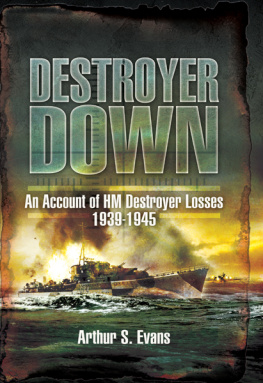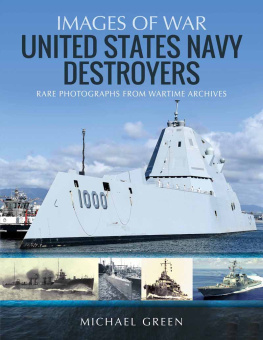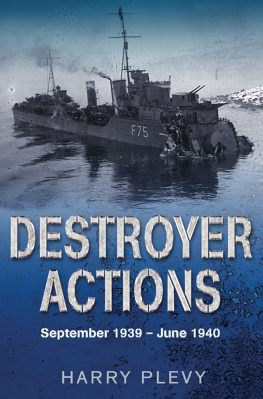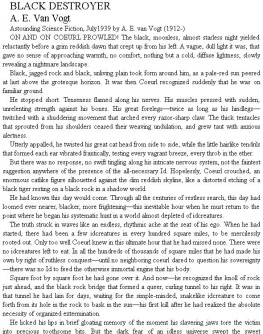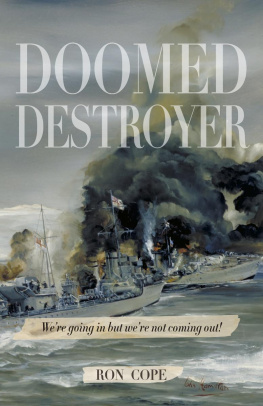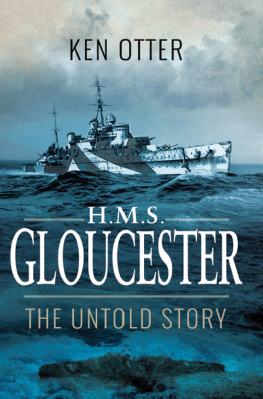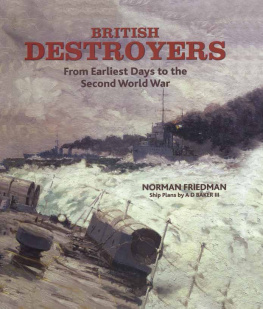First published in Great Britain in 2010 by
Pen & Sword Maritime
an imprint of
Pen & Sword Books Ltd
47 Church Street
Barnsley
South Yorkshire
S70 2AS
Copyright A. S. Evans 2010
ISBN 978-1-84884-270-0
ePub ISBN: 9781844687886
The right of A. S. Evans to be identified as Author of this Work has been
asserted by him in accordance with the Copyright, Designs and Patents Act
1988.
A CIP catalogue record for this book is available from the British Library.
All rights reserved. No part of this book may be reproduced or transmitted in
any form or by any means, electronic or mechanical including photocopying,
recording or by any information storage and retrieval system, without
permission from the Publisher in writing.
Typeset in 11 pt Ehrhardt by
Mac Style, Beverley, E. Yorkshire
Printed and bound in the UK by CPI
Pen & Sword Books Ltd incorporates the imprints of Pen & Sword Aviation,
Pen & Sword Maritime, Pen & Sword Military, Wharncliffe Local History,
Pen and Sword Select, Pen and Sword Military Classics and Leo Cooper.
For a complete list of Pen & Sword titles please contact
PEN & SWORD BOOKS LIMITED
47 Church Street, Barnsley, South Yorkshire S70 2AS, England
E-mail:
Website: www.pen-and-sword.co.uk
Contents
Publishers Note
The manuscript for this book came to light as a result of a visit to the late authors widow, Joan Evans, in connection with the republication of his much acclaimed record of wartime submarine losses entitled Beneath the Waves. This book follows the same theme but as applied to World War II Destroyers of the Royal Navy. Pen & Sword have made every effort to ensure the accuracy of the information within this volume, but without the author to consult, every minute detail cannot be checked. The publishers would be pleased to note any factual modifications readers may wish to offer.
Chapter One
1939
At sea there was no such thing as a Phoney War. In the four months from the outbreak of hostilities until the end of 1939, thirty Royal Navy vessels were sunk. Three of His Majestys destroyers featured among the casualties.
HMS Blanche
The first was the Blanche, captained by Lieutenant-Commander Robert Aubrey. The cruiser-minelayer Adventure, under the command of Captain Arthur Halfhide, was being escorted from the Humber to Portsmouth by Blanche and the destroyer Basilisk when shortly after 0500 on 13 November the Adventure, by then in the vicinity of the Thames estuary, exploded a mine port side and just before the bridge. Correctly assuming that his ship had been mined and not torpedoed, Captain Halfhide ordered Basilisk alongside Adventure to transfer the wounded, which numbered about sixty. After lowering boats Blanche proceeded to carry out an anti-submarine sweep. Although severely damaged, Adventure was in no danger of sinking and by 0715 was again underway. Basilisk was ordered to lead the cruiser into the Edinburgh Channel, one of three deep-water channels in the Thames estuary. Speed was gradually built up to 8 knots and all appeared to be going as well as could be expected when at 0745 sea-water was found to have mixed with Adventures oil fuel. While Basilisk was making preparations to take the cruiser in tow, good work by Adventures crew enabled her once more to proceed under her own power.
The improved situation had given cause for optimism when disaster once more befell the group. Blanche was in station on Adventures starboard bow when at 0810 the destroyers after end detonated a mine. Heavily damaged, and rapidly losing steam, Blanche quickly came to a halt. Able Seaman William Eldridge was in charge of the bridge searchlight and had gone below for a cup of tea when, says Eldridge:
The explosion aft shook the cup right out of my hand. The bows of the ship seemed to leap right out of the water. We were thrown all over the place. There was no panic. We made everything safe, shutting doors and so on, took our places on the upper deck, and then put on our life-jackets. Two hours later our ship rolled over and sank. Some of us had already jumped into the water, which was thick with oil; others were thrown in as the ship turned over for the last time. We were picked up wonderfully quickly. From Leading Stoker John Mutton I heard how a number of the ships company, instead of bothering about their own safety, searched the ship high and low for Black Em, the ships mascot, a tiny black cat. But it appears that Black Em had taken fright from the explosion and had stowed away and, presumably, was lost. Two officers standing on the deck only a few feet from the seat of the explosion escaped unhurt. Another officer was in his bath, but managed to crawl to safety.
The officer taking a bath was Sub-Lieutenant Dudley Davenport. Davenport reports:
Having been up most of the night, Lieutenant Patrick Graham and I tossed a coin to decide who should remain on watch and who should go below first for a bath and a breakfast. I won. I was in the bathroom at the fore-end of the after superstructure when we hit a mine in the same minefield. The explosion, just forward of the after superstructure, knocked me out and I imagine that it was the shattered mirror and basin which cut me about the head and feet, hence the origin of the report Bloody Officer Found in Bath. I came to lying on the upper deck by the torpedo tubes. I soon felt well enough to walk forward towards the bridge to find out what was going on. After the effort of climbing the forecastle ladder I felt the need of a rest and sat down on the deck with Midshipman Byrne, who had also been injured.
A tug came alongside to tow us. Shortly after she took the strain, the ships back broke and she slowly rolled over to port and sank. Mr Byrne and I were able to slide down the starboard side of the forecastle and were soon picked up by one of the tugs. After drying our clothes in the tugs boiler room, we were landed on Ramsgate pier. At Ramsgate there was a large assembly of ambulances (military, civil, and volunteer) all keen to collect their first casualties of the war!
Another survivor was Able Seaman Hoyle:
I was on deck when a terrific explosion shook the ship. I saw a man blown right past me over the side of the ship into the water. At the same moment the mast snapped and crashed down. A lifeboat was lowered to rescue the man; the ship was already listing badly. Our first thought was for the men trapped below near the explosion. We forced our way through the wreckage to rescue them. The injured men were brought up and laid on the deck while we tended to their injuries.
We were sinking by the stern, but there was no order to abandon ship. Every man was eager to save her. They worked hard shoring up the bulkheads and manning the pumps. By this time the quarter-deck was awash. Some of the men were so badly injured that they had to be tied to the stretchers. We carried them to the other side of the ship, away from the list. Then a tug arrived on the scene, and actually got a line to us and began to tow us. The ship had practically righted herself and everybody thought she would hold, but a few minutes later she turned quickly over to port and lay on her side. One again we were concerned for the injured. I saw the captain, who had no lifebelt himself, unstrapping one of the injured from the stretchers. We put lifebelts on the injured and as the ship was sinking slid them into the water. The captain swam around encouraging the men. Gradually the tug picked up most of us, and then a trawler and a little pleasure boat came out and picked up the rest.
Skipper Jack Pocock, owner of a trawler that came to assist, reports:
Next page
